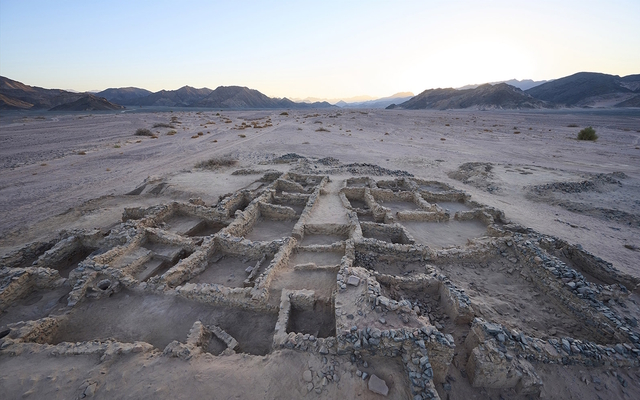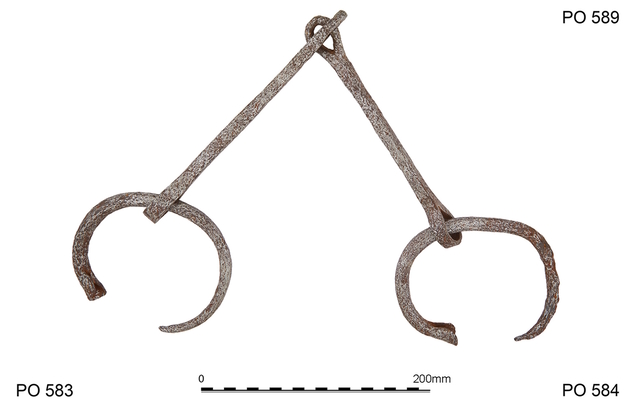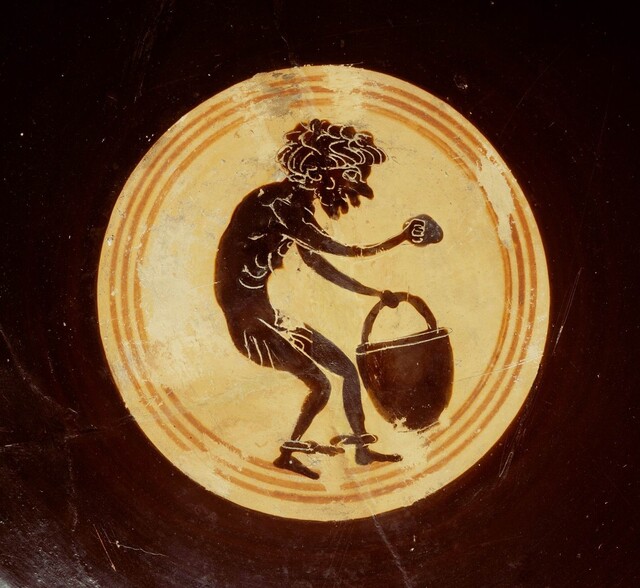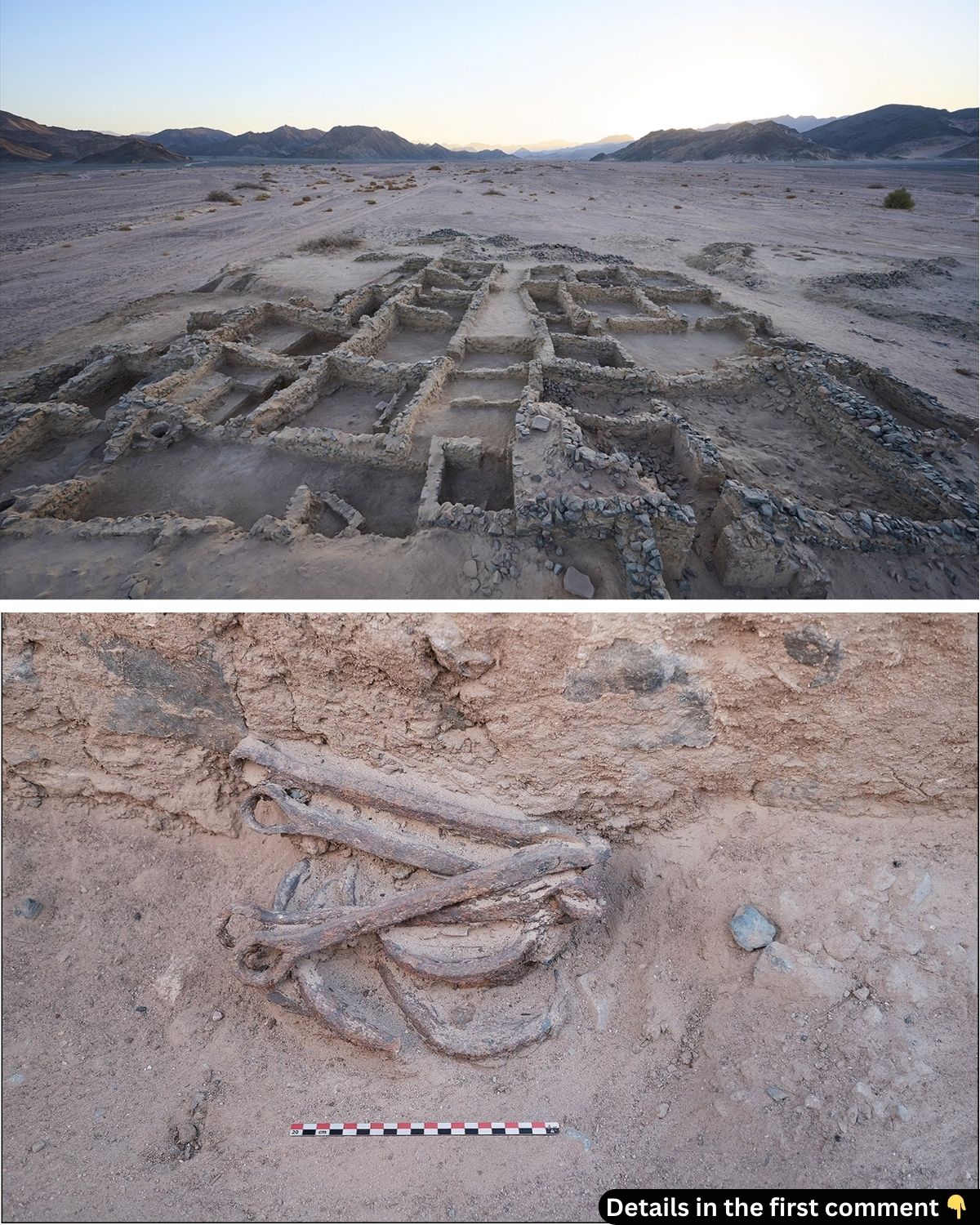In the vast, sun-scorched expanses of Egypt’s Eastern Desert, an archaeological discovery has shed light on the grim conditions faced by workers during the Ptolemaic period. Excavations at the Ghozza site have unveiled an unsettling reality – evidence of forced labor in Egypt’s gold mines. Archaeologists have unearthed iron shackles used to restrain miners, providing direct evidence of the brutal working conditions that supported the gold extraction that funded Egypt’s ambitious rulers. This discovery, which dates back to the 3rd century BCE, is a haunting reminder that the wealth and grandeur of Ptolemaic Egypt came at an immense human cost.
The Ghozza Gold Mine: A Glimpse into Ptolemaic Egypt’s Exploitation
Ghozza, located in Egypt’s Eastern Desert, was a vital gold mining operation during the Ptolemaic period, a time when Egypt was under the rule of the descendants of Alexander the Great. The site, part of an extensive mining network, reveals much about the era’s mining techniques and the labor system. The settlement at Ghozza was more advanced than many other mining sites, with streets, residential blocks, and even baths suggesting a more organized community. Unlike Samut North, where workers were confined to guarded dormitories, Ghozza appears to have had a more open structure, raising questions about the organization of labor and the roles different workers played.


However, despite the seemingly more organized setup, the discovery of iron shackles at Ghozza complicates this picture. These shackles were used to restrain workers, confirming the existence of forced labor, which was a harsh reality for many during this time. This discovery provides a new layer of understanding about how the Ptolemaic rulers maintained control over their workforce.
Video
Watch the video about the discovery of 2,200-year-old shackles at an ancient Egyptian gold mine.
The Discovery of Shackles: Evidence of Forced Labor
The most striking find at Ghozza is the collection of iron shackles discovered in January 2023. These shackles were found in a metal storage and production area, indicating their use for controlling the labor force. Two sets of shackles were uncovered – one set consisting of seven rings for feet and two articulated links, and the other with four links and scattered ring fragments. These shackles were specifically designed to restrict movement, forcing miners to work under extreme conditions.
The shackles found at Ghozza are significant because they directly confirm historical accounts of forced labor in Egypt’s mines, previously known through written sources. Greek historian Agatharchides, writing in the 2nd century BCE, mentioned how prisoners of war and criminals were condemned to work in Egypt’s mines, shackled and forced to labor day and night. Although such practices were known, physical evidence linking shackles to mining operations is incredibly rare, making this discovery vital for our understanding of the exploitation of labor in ancient Egypt.

Gold Mining in the Eastern Desert: The Role of the Ptolemies
During the Ptolemaic period, Egypt’s Eastern Desert was a significant source of wealth, with gold being one of the most coveted resources. The Ptolemies, who ruled Egypt following Alexander the Great’s death, were keen to maintain their power through military campaigns and architectural endeavors, all of which required substantial financial resources. Gold mining was one of the ways they funded their ambitions, and the mines of the Eastern Desert became increasingly important.
At its peak, the Ptolemaic Empire operated around 40 gold mines, including the Ghozza site, which was likely one of the northernmost mines. These operations were organized to extract vast amounts of gold, with forced labor providing much of the manpower. The wealth from these mines helped to maintain Egypt’s dominance in the Mediterranean, but this came at a tremendous human cost.
The Social Structure of Ghozza: Forced Labor and Paid Workers

The labor force at Ghozza was not homogenous. Some workers were paid for their services, as indicated by inscriptions found on ostraca (pottery fragments used for writing). However, the shackles discovered at the site suggest that many workers were not paid and were instead forced to work under extreme conditions. These workers likely consisted of prisoners of war, criminals, and others who had no choice but to labor in the mines.
The existence of both paid and forced workers at Ghozza raises important questions about the social dynamics within the mining community. Was the majority of the workforce enslaved, or were there more complex social hierarchies at play? The lack of clear confinement areas and the mixed nature of the workforce suggest that the labor system was multifaceted, with some workers living under relatively free conditions while others were subjected to brutal forced labor.
The Mining Techniques and Daily Life at Ghozza
The discovery of shackles is not the only revelation at Ghozza. The site has also provided insight into the mining techniques used during the Ptolemaic period. Unlike other mines in the region, such as Samut North, where collective mills were used to crush quartz, Ghozza appears to have employed manual grinding with stones. This suggests that the mining operations at Ghozza may have been more diversified, possibly involving a wider range of tasks and processes.
The daily life of the miners at Ghozza was undoubtedly difficult. Evidence from the excavation suggests that the workers lived in relatively close quarters, with residential blocks located alongside administrative buildings and storage areas. This setup likely facilitated the strict supervision of the workforce, ensuring that workers could be easily controlled and monitored. The discovery of ostraca with records of wages suggests that, at least in some cases, miners were compensated for their work, although the vast majority of them likely lived under harsh conditions.
Comparison with Other Ancient Mining Sites: Insights from Greece
The shackles found at Ghozza are not entirely unique in the ancient world. Similar shackles have been discovered at the silver mines of Laurion in Greece, where slaves were similarly forced to work under grueling conditions. The similarities between the shackles found in Egypt and those at Laurion suggest that Greek and Macedonian engineers brought their mining techniques, as well as their methods of controlling labor, to Egypt under Ptolemaic rule.
The use of shackles and the similarities between the mining technologies of Egypt and Greece highlight the harsh realities faced by workers in ancient mines. Whether in Egypt or Greece, the exploitation of workers was a fundamental part of the mining industry, with miners often treated as mere tools for the extraction of valuable resources.
Concluding Thoughts: The Human Cost of Egypt’s Wealth
The discovery of shackles at Ghozza provides a stark reminder of the human cost behind Egypt’s ancient wealth. While the gold extracted from these mines financed the ambitions of the Ptolemaic rulers and contributed to the grandeur of Egyptian civilization, it also came at a significant cost to the workers who labored under extreme conditions. The forced labor uncovered at Ghozza serves as a reminder that beneath the opulence and power of ancient Egypt lay a history of exploitation and suffering.
As excavations continue at Ghozza, more may be uncovered about the lives of the workers who helped build Egypt’s wealth. This discovery not only deepens our understanding of the Ptolemaic period but also brings to light the human stories that have long been overshadowed by the grandeur of ancient Egypt’s monuments and riches.
Video
Watch the video Where Does Gold Come From? by David Lunney.



